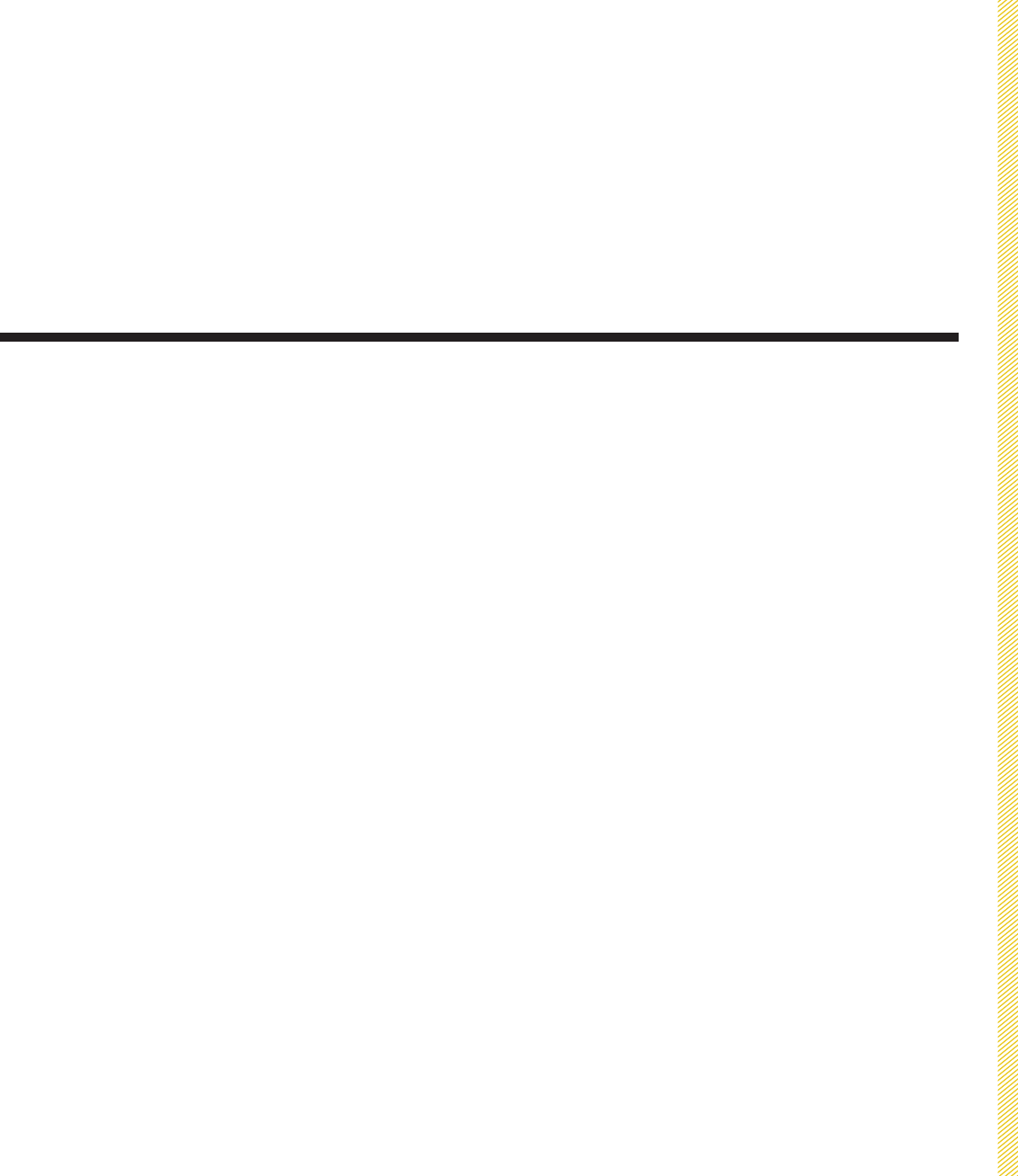
69
Hello Ink
Welcome to another messy adventure! Cover tables
and wear old clothes or pick a sunny day to work
outside. Again, I used India ink—this time diluted with
water to create the work, but you could use strong
black tea or coffee, watercolors, or diluted poster
paint. So far we have used ink with a paintbrush and
for printing objects, but in this chapter we are going
to explore and exploit what ink can do on its own.
For inspiration, look up Jackson Pollock, who was
famous for his violent, expressionist drip paintings.
He would lay the canvas directly onto the floor and
then paint in a highly physical manner, dripping,
splashing, and pouring layers of paint from above.
Ian Davenport is another exciting artist; he uses
household gloss paint poured from syringes, allowing
the paint to naturally flow down the surface in
ordered stripes.
Ink offers a very exciting way to create spontaneous
and unpredictable marks. It is a more physical
approach than we have previously used, requiring
more body movement to create a wide and diverse
range of marks. This exercise promises a real sense
of fun and play and a chance to return to a type of
drawing that you may have left behind in childhood.
You will need some disposable cups (or, if you are
using tea or coffee, mugs are fine), your paintbrush,
a drinking straw, salt, plastic wrap, and a crayon or
oil pastel.

Drips
To create drips like these, load your brush with plenty of
ink and then hold it vertically and very still above the page,
waiting for the ink to fall off in a drip. This creates more
predictable and circular marks than flicking the wrist.
Wet-on-Wet
If you paint the paper first using your paintbrush loaded with
clean water, then drip ink on top, the mark will bleed and
flow. This technique—essentially painting onto an already-
wet page rather than onto dry paper—is called wet-on-wet.
Flicking
To create these flick marks, load your brush with ink, hold it
above the page, then flick your wrist to splat, drip, and spot
the ink onto the paper.
Pouring
Here I added a small amount of ink to a disposable cup, held
the page vertically, and poured the ink across the page,
allowing it to run down the page in stripes.
TECHNIQUES
70 > Fearless Drawing

Plastic Wrap (cling film)
Apply plastic wrap to wet ink and allow to dry completely
overnight. The folds and creases will be replicated in the ink,
leaving a beautiful folded texture.
Salt
Sprinkle salt onto wet ink and allow to dry completely. The
salt will absorb the ink, leaving a speckled effect.
Wax Resist
Use a wax crayon, oil pastel, or candle to create marks and
then paint over with the ink. The wax repels the water,
allowing the marks to be seen clearly through the ink.
Straw Blow
Pour some ink onto the page and then hold a drinking straw
above the ink and blow. This creates really beautiful organic
lines, which remind me of tree branches.
Hello Ink > 71

PRACTICE TECHNIQUES: YOUR TURN
On these pages, glue your experiments with the many possible textures and effects ink offers.
We are gradually building up your toolbox with potential techniques. As we proceed, begin to
think about those you like most and how they might be used and combined.
TIPS
Make sure that you clearly
label how you managed to
make these marks so that
you can easily replicate
them in the future.
72 > Fearless Drawing

Hello Ink > 73
..................Content has been hidden....................
You can't read the all page of ebook, please click here login for view all page.
